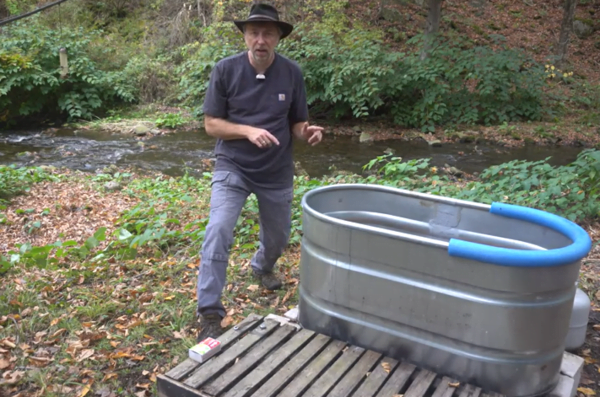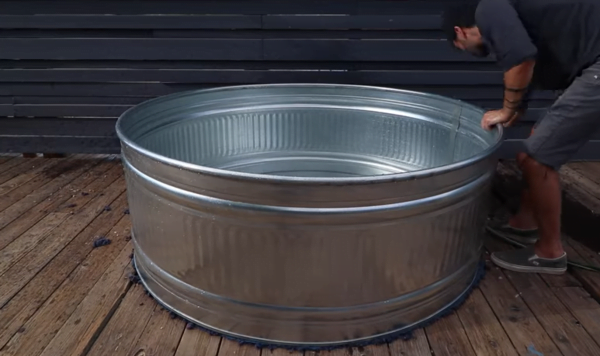This article will explain the basic steps of building a hot tub from a stock tank, the pros and cons of a stock tank hot tub, and the materials needed to make it.
Building a hot tub from a stock tank is a great project for the DIY enthusiast who wants to save some money and get a good quality hot tub at the same time. This is a very common project, and there are many different ways to build it. Some of the most popular options include using a stock tank. We'll explain the process of building one for your home.
Why Build a Stock Tank Hot Tub?
Stock tanks can be a great alternative for those who want a hot tub but don't want to spend a fortune on one. Stock tanks are typically built from galvanized steel that can withstand rust for an extended time. They come in a variety of sizes and shapes.
Building a stock tank hot tub takes time, but anyone can create their own hot tubs without spending a fortune with the right tools. Here are some reasons why more people are making their own stock tank hot tubs:

- rugged and durable
- low maintenance
- easy installation
- easy to move
- affordable
- shoulder-deep
Key Takeaways: Anyone can make a stock tank hot tub, and there are a lot of advantages to making one.
How to Build a DIY Stock Tank Hot Tub
It has never been easier to build a hot tub. You can make your own hot tub in your backyard or create one for your house. The technology today allows us to create our own hot tubs with ease. In fact, you can even build one that works just like a modern hot tub with plumbing, jets, and heating. And to make it more energy-efficient, you can also invest in a floating insulation cover.


Here's what you need to build your own stock tank hot tub:
- Stock tank. Depending on the size, you can buy them from your local hardware store for just $200 to $450. They come in plastic or galvanized steel with diameters ranging from 4 to 6 feet and depths of around 12 to 24 inches. The good news is they're both corrosion resistant and can last you for many years.
- Hot tub components and supplies. You can go for just the basic heating element or make it more like modern Jacuzzis with pumps and aerators. One of the advantages of DIY hot tubs is you can customize them to your heart's content. For best results, you should at least have a heating element (propane hot water heater/spa heater), tubing or hose, water circulation pump, air blower for bubbles, jets, skimmer, inline water filter, and spigots.
- Stock tank hot tubs look cozier when surrounded by decorative accents like rocks and outdoor furniture. It also hides the plumbing, which can become an eyesore when left exposed.
Once you have the parts, it's time to build your own stock tank hot tub. Here's an overview of the entire process. You can check on YouTube about the proper techniques used in construction if you don't have prior experience with DIY projects.
- Choose an appropriate and level spot close to a power source.
- Install the heater.
- Cut/drill two holes in the side for through fittings. Cut holes for jets (optional).
- Connect the hoses to the heater and pump.
- Turn on the hot tub to check for leaks.
- Fill up the tank.
- Turn on the pump.
Key Takeaways: Planning is critical when making your stock tank hot tub. Always get the right tools before starting the project. It makes the job a lot easier and makes your hot tub work like a modern hot tub.
Drawbacks of Stock Tank Hot Tubs
Building your own stock tank hot tub can be very satisfying. You get the same experience offered by modern hot tubs without spending a lot of money. But there are also drawbacks you need to be aware of. Fortunately, you can fix them pretty easily.


- slime and algae: stagnant water promotes mold and bacterial growth
- no filtration: stock tanks don't come with their own filtration system
- rust: sanitizers like chlorine tablets can speed up corrosion
- insects and mosquitoes: standing water is a perfect breeding ground for insects.
- uncomfortable: stock tanks don't have seats and headrests
- no jets and bubbles: stock tanks don't come with one
Key Takeaways: Building and maintaining a stock tank hot tub takes more work than buying a new one. Consider the pros and cons and see if it's worth your time building one.
Conclusion
With a little bit of work, you can make your stock tank hot tub work just like a modern Jacuzzi. The good news is finding these parts and getting the right sanitizers for your stock tank hot tub isn't too hard. You can find plenty of videos over the internet or just ask for help from a DIYer in your neighborhood.
